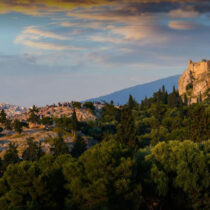The representations of modern Greek dance from the sixteenth to the nineteenth century are examined in this article, as they have come down to us through the engravings, drawings and paintings of the European travelers of the time. It is a rich illustrative material, a valuable archive of representations in which details of the everyday life of modern Greeks have been recorded. These details often transmit a variety of information about dance in a period that any other relevant evidence is rather limited Furthermore, they are also related to the “discovery” of modern Greeks by the Europeans and prove how the latter “saw” and regarded them in a critical phase of their history, revealing the attitude, apprehension and culture through which they were approaching the Greeks. Already since the mid-eighteenth century the travelers systematically connect ancient Greece with its modem version. In the fertile climate of Romanticism the interest in the ethnic and folk tradition, in music and dance is born and developed. Thus, issues concerning the synthesis or the models of the aforementioned representations throw light on the procedure of creating these works and at the same time clarify, as possible, the picture of the modern Greek dance tradition.
Dance and Travelers: Interpreting Sixteenth- to Nineteenth-Century Representations
28 Aug 2012
by Archaeology Newsroom
- A
- A
- A


